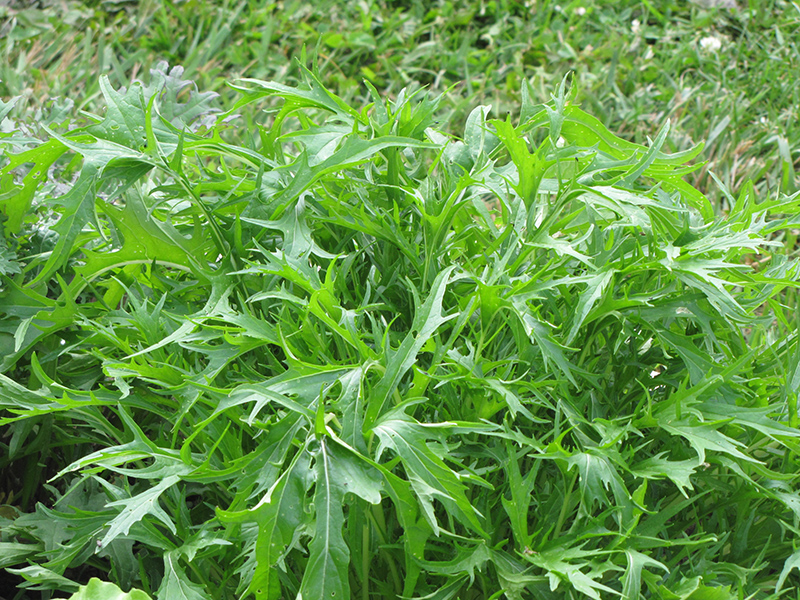Height: 24 inches Spacing: 10 inches
Sunlight:
Hardiness Zone: 6 Other Names: Rocket Salad, Roquette Description: An annual herbaceous plant that is widely cultivated for its piquant leaves, for salads, and as a cooked green; its oil-rich seeds are also utilized; white to creamy yellow flowers rise above in summer; a wonderful garden or container plant Edible Qualities Arugula is a perennial vegetable plant that is commonly grown for its edible qualities, although it does have ornamental merits as well. The lobed green leaves can be harvested at any time in the season. The leaves have a spicy taste with a crisp texture and a distinctive fragrance. The leaves are most often used in the following ways: Planting & Growing Arugula will grow to be about 24 inches tall at maturity, with a spread of 12 inches. When planted in rows, individual plants should be spaced approximately 10 inches apart. Its foliage tends to remain dense right to the ground, not requiring facer plants in front. It grows at a fast rate, and tends to be biennial, meaning that it puts on vegetative growth the first year, flowers the second, and then dies. As an herbaceous perennial, this plant will usually die back to the crown each winter, and will regrow from the base each spring. Be careful not to disturb the crown in late winter when it may not be readily seen! This plant is quite ornamental as well as edible, and is as much at home in a landscape or flower garden as it is in a designated vegetable garden. It does best in full sun to partial shade. It is very adaptable to both dry and moist growing conditions, but will not tolerate any standing water. It is not particular as to soil type or pH. It is somewhat tolerant of urban pollution. This species is native to parts of North America.. Arugula is a good choice for the vegetable garden, but it is also well-suited for use in outdoor pots and containers. It can be used either as 'filler' or as a 'thriller' in the 'spiller-thriller-filler' container combination, depending on the height and form of the other plants used in the container planting. Note that when growing plants in outdoor containers and baskets, they may require more frequent waterings than they would in the yard or garden. Be aware that in our climate, this plant may be too tender to survive the winter if left outdoors in a container. Contact our experts for more information on how to protect it over the winter months.![]()
![]()
![]()
![]()
![]()
![]()
![]()
![]()
![]()
Characteristics
Applications
Ornamental Features
This guide is an online resource representing many of the varieties that we carry over the course of the season, and is intended for informational purposes only. Inventory varies seasonally, so we cannot guarantee that every plant will be in stock at all times - please contact the store directly for current availability. It does not include our entire selection of plants, so be sure to visit our store to see varieties that may not be represented on this list.


